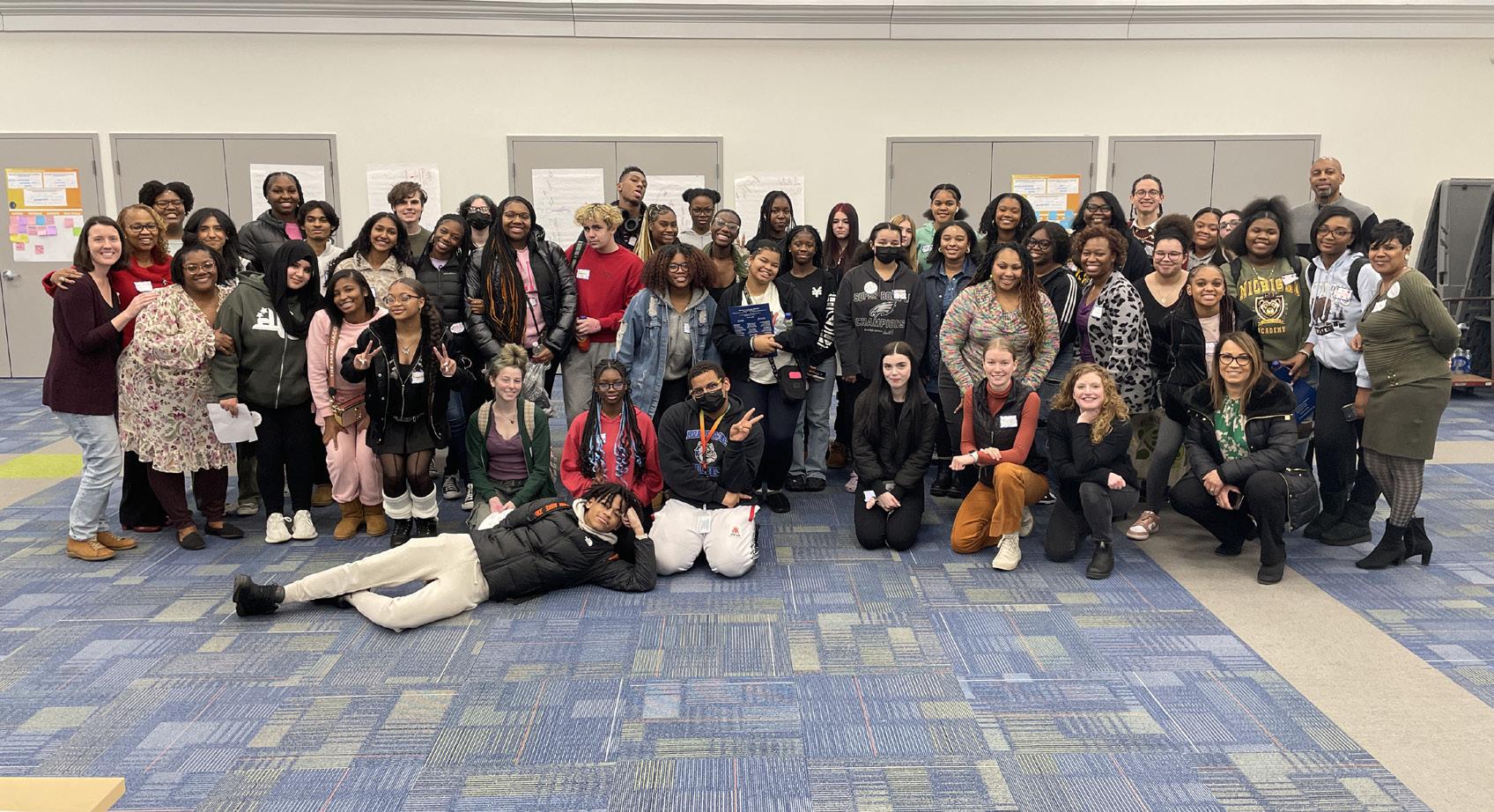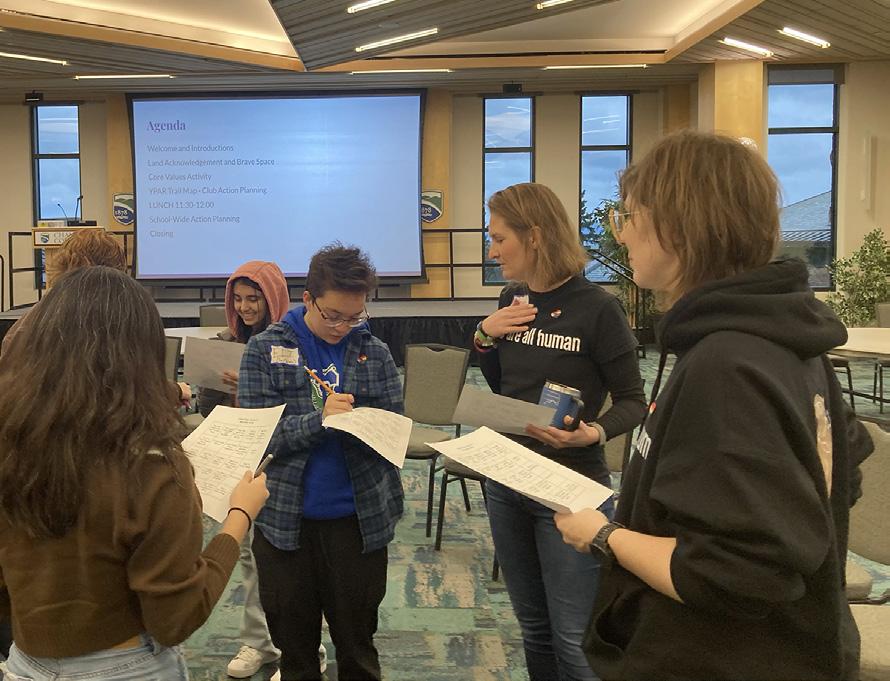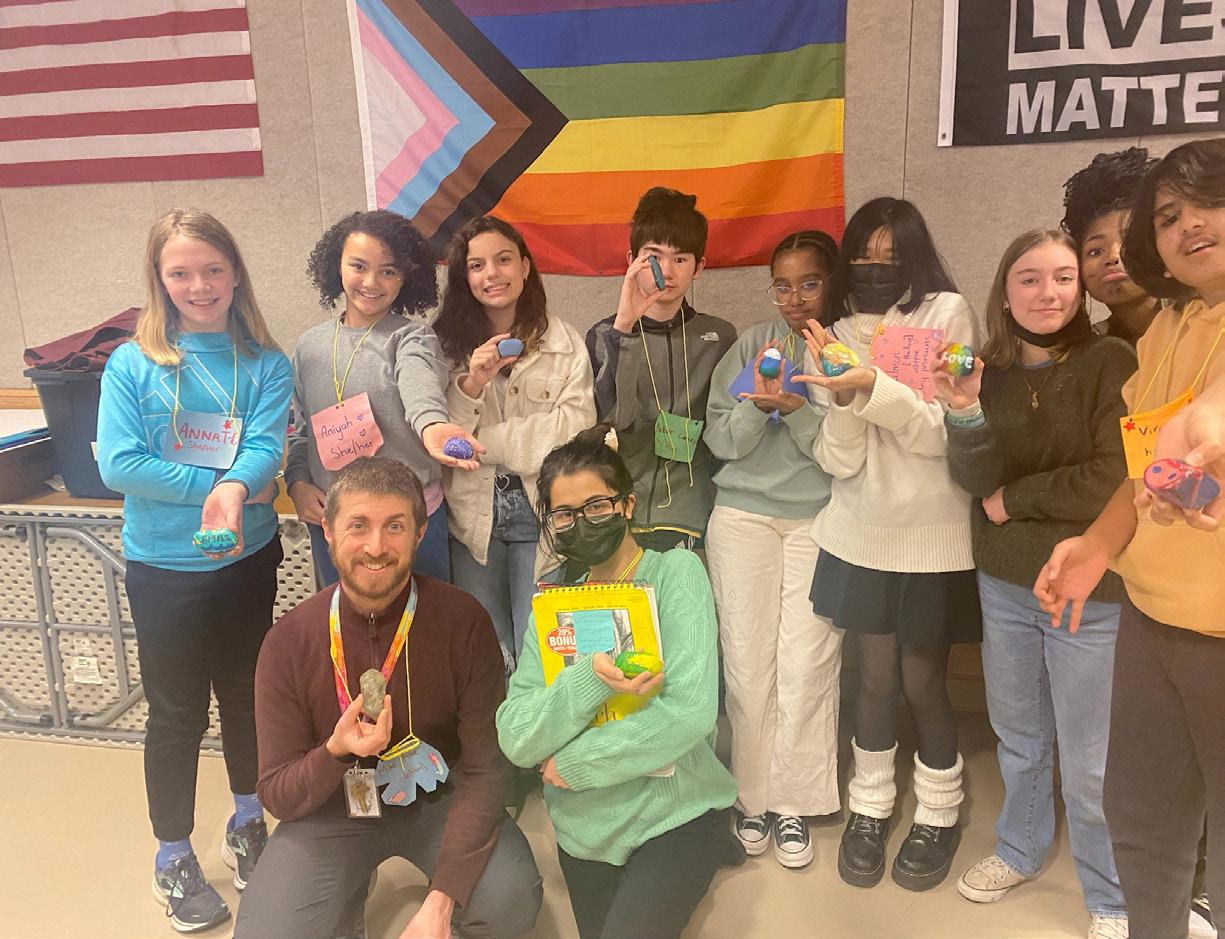
2 minute read
IMPACT UPDATE
February 2023
Every member of a community has a sphere of influence.
Advertisement

In educational systems, this sphere contains a network of relationships that can influence decisions, policy and practices. The outcomes ultimately depend on the strength of the relationships between students, teachers, administrators, families, and community members. UP for Learning supports these networks as they fully engage youth in reimagining and transforming education. Our grounding belief is that change occurs when youth and adults share power, voice, and responsibility. Humans thrive when we feel valued as equals in meaningful relationships, doing relevant work towards a common goal. Why then, at a time when youth most need to affirm their identity and value in the world, do educational systems ask them to become passive, obedient, and voiceless? What is the cost of this reality for all students, and particularly for those who already feel devalued and disempowered?
Citizen engagement in decision making is a basic tenet of democracy. Across all of UP’s work, we model democratic practices when youth and adults engage in authentic partnerships: feeling agency, finding common ground, establishing deep listening practices, understanding issues, and involving all invested parties in a change process. What follows are examples from the 2022-2023 academic year that explore the impact on youth and adults, and the overall sustainability of the democratic process, when youth are co-designers and co-implementers of community change projects. This work would not be possible without YOU, our treasured partners!
UP by the Numbers
544 hours of compensated time for youth co-facilitators/ interns
68 youth interns and Action Council members
2 youth voting members on UP’s Board of Directors
77 unique youthadult teams
64 districts or schools partnering with UP
8 states/nations with teams working with UP (VT, MS, GA, DE, NH, MA, Cherokee Nation (OK), and Nepal)
6 monthly virtual racial justice dialogue events led by VT and MS youth (continued from 2020-2021)
28 inaugural Vermont State Youth Council members trained by UP youth facilitators
5 state and national conferences where UP youth and staff presented
(Data from July 2022-Jan 2023)
HOW DOES WORKING IN AUTHENTIC YOUTH-ADULT PARTNERSHIP REFLECT TRUE PARTICIPATORY DEMOCRACY?
facilitating the first leadership training for the inaugural Vermont State Youth Council, more and more youth are seeing themselves as leaders and changemakers!


What has this peer to peer training looked like in action?
Working with UP is often the first time that youth, and even some adults, experience civic engagement and how it feels to impact both the individual and the collective. Everyone adds value and contributes to change! Once youth and adults develop skills and tools to conduct participatory action research, they see their individual and collective value and their role as changemakers in their community.
Inspired and empowered by their experiences as UP for Learning Youth Facilitators, five high school youth created and piloted the Youth Leadership Module,which provides youth with resources, structure, tools and practice to build their own capacity as leaders. This year, schools throughout the country are supporting new and emerging leaders using this module’s progression of lessons and activities. From rural Vermont middle and high schools, to Brandywine School District in Delaware, to UP youth
SNAPSHOT #1: Colchester Middle and High Schools’ social justice-oriented clubs gathered to design meaningful action projects, engage with district-wide equity policies, and envision a more just school for their community. This group has excelled at creating opportunities for youth voices to be involved in decision making and policy governance by bringing the superintendent and school leadership to the place where deep conversations about justice are happening!
SNAPSHOT #2: At Williston Central School , youth and adults have been working on equity visioning and action since the beginning of the school year. They have worked to define equity for their community, to learn about the foundations of restorative practices, and to create action projects that range from curriculum audits to carving out more time for connecting with peers, to student-led Diversity, Equity, and Inclusion workshops. This team exemplifies shared power as school leadership is deeply involved and engaged in the whole process and shared responsibility as they take on different roles in bringing the community together and aligning with projects.



